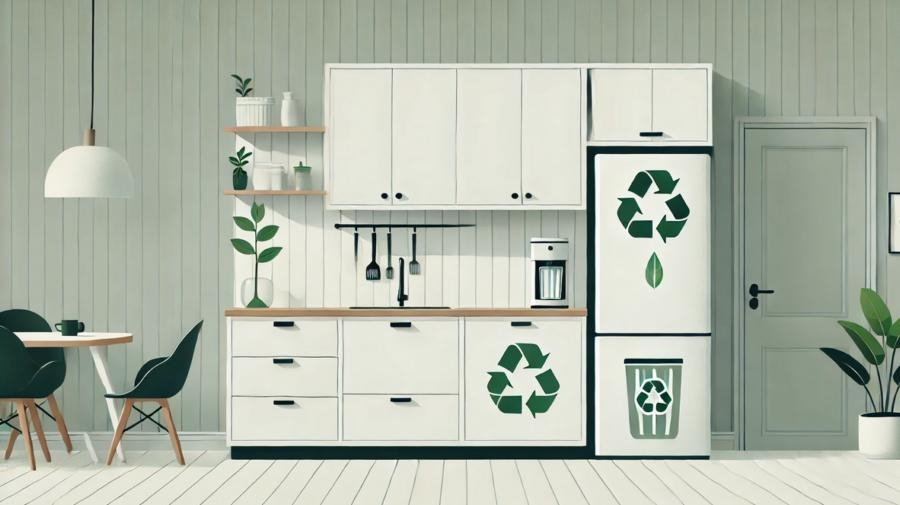Eco-Friendly Kitchens That Save Trees and Keep Landfills Lonely

Cabinet Refacing: The Green Kitchen Upgrade That Doesn’t Cost the Earth
Kitchen cabinets don’t usually make the list of environmental villains, but they have a dirty secret—when homeowners rip them out, they often end up in landfills, contributing to unnecessary waste. If your cabinets are structurally sound but just a little outdated, replacing them is like throwing away a perfectly good sweater just because it’s last season’s color. That’s where cabinet refacing swoops in as the eco-friendly hero.
Instead of tossing out wood that took decades to grow, professional cabinet refacing breathes new life into existing cabinetry by replacing doors, applying fresh veneers, and upgrading hardware. It’s the equivalent of giving your kitchen a stylish new outfit instead of sending it straight to the dump. And the best part? It’s not just good for the planet—it’s good for your wallet, too.
A Landfill’s Worst Nightmare: Cabinets That Stay Put
Let’s talk numbers. The Environmental Protection Agency (EPA) estimates that over 9 million tons of wood waste end up in landfills every year. A significant chunk of that comes from home renovations, with old cabinets being a prime offender.
The problem? Wood doesn’t decompose quickly, and many cabinets are coated in paints, stains, or adhesives that contain chemicals capable of leaching into soil and water. In other words, every time a homeowner rips out their perfectly usable cabinets, they’re not just making their kitchen look better—they’re also contributing to a slow-motion environmental disaster.
Refacing cabinets eliminates that waste. Instead of dumping an entire set of cabinets into the trash, refacing professionals reuse the existing framework, ensuring that less wood ends up buried underground. It’s the ultimate form of recycling—one that doesn’t involve separating tiny plastic wrappers and questioning every life choice in front of a recycling bin.
Saving Trees, One Kitchen at a Time
Deforestation isn’t just a problem for rainforests—it’s a global crisis. The production of new wooden cabinets contributes to the demand for lumber, which means more trees are cut down to keep up with home renovation trends.
Cabinet refacing drastically reduces this demand by making the most of what’s already there. Homeowners who opt for refacing instead of replacement can help preserve forests, ensuring that trees continue doing what they do best—producing oxygen, providing habitats, and making the planet slightly less doomed.
For those who still want a fresh look with sustainable materials, many refacing professionals offer eco-friendly veneers made from fast-growing, renewable resources like bamboo or reclaimed wood. This means you can have a gorgeous kitchen without feeling like an accessory to deforestation.
Low-VOC Finishes: Because Breathing Should Be Safe
Cabinets aren’t just about what you see—they’re about what you breathe. Traditional finishes and paints often contain volatile organic compounds (VOCs), which are fancy words for chemicals that evaporate into the air and make indoor air quality worse. Ever get a headache from that “new paint” smell? That’s VOCs working their not-so-magical charm.
Luckily, professional cabinet refacers now offer low-VOC and water-based finishes that keep your kitchen looking fresh without filling the air with toxins. This means fewer chemicals floating around your home, which is especially important for households with kids, pets, or an appreciation for oxygen.
Sustainable Hardware: Small Details, Big Impact
Refacing isn’t just about slapping on a new veneer and calling it a day—hardware matters too. Traditional cabinet handles, knobs, and hinges are often made from resource-heavy materials like brass, nickel, or plastic, all of which require energy-intensive manufacturing processes.
Luckily, many refacing professionals offer sustainable hardware options, including:
- Recycled metal handles and knobs, which give new life to old materials
- Bamboo or reclaimed wood pulls for a natural, biodegradable alternative
- Matte-finished hardware with eco-friendly coatings to reduce chemical impact
Choosing these options may seem like a small change, but multiplied across thousands of kitchens, the environmental savings add up faster than a toddler can empty a drawer of utensils.
Energy Savings Without the Heavy Machinery
Full kitchen renovations aren’t just costly in materials—they’re also energy hogs. Cabinet replacements often involve saws, drills, sanders, and a whole lot of transportation-related emissions from shipping new materials and hauling away the old ones.
Cabinet refacing, on the other hand, is a far more energy-efficient process. There’s no demolition, no excessive machinery, and no need to manufacture entirely new cabinet boxes from scratch. The energy savings may not be as obvious as turning off a light switch, but over time, they make a significant difference.
Think of it this way: refacing is like upgrading a car’s paint job and interior instead of junking the whole vehicle for a newer model. You get the same refreshed look without the environmental price tag.
The Green Choice That Pays Off
Aside from helping the planet, cabinet refacing also offers a financial return that’s hard to ignore. Homebuyers love an updated kitchen, but they love eco-friendly upgrades even more. As sustainable living becomes more mainstream, features like low-VOC finishes, recycled materials, and waste-reducing renovations become powerful selling points.
A home with a refaced, modern-looking kitchen can fetch a higher price without the massive investment of a full remodel. That’s the kind of eco-friendly decision that keeps both the environment and your bank account happy.
Tree Hugging Has Never Looked So Stylish
It turns out, saving trees and reducing landfill waste doesn’t require chaining yourself to a bulldozer—it can start right in your own kitchen. Cabinet refacing offers a way to refresh your space without unnecessary waste, deforestation, or harmful chemicals.
With sustainable veneers, eco-friendly hardware, and low-VOC finishes, it’s easier than ever to have a kitchen that’s both stunning and smart. And the best part? Your cabinets will look brand new—without a single tree shedding a tear.
|
|







